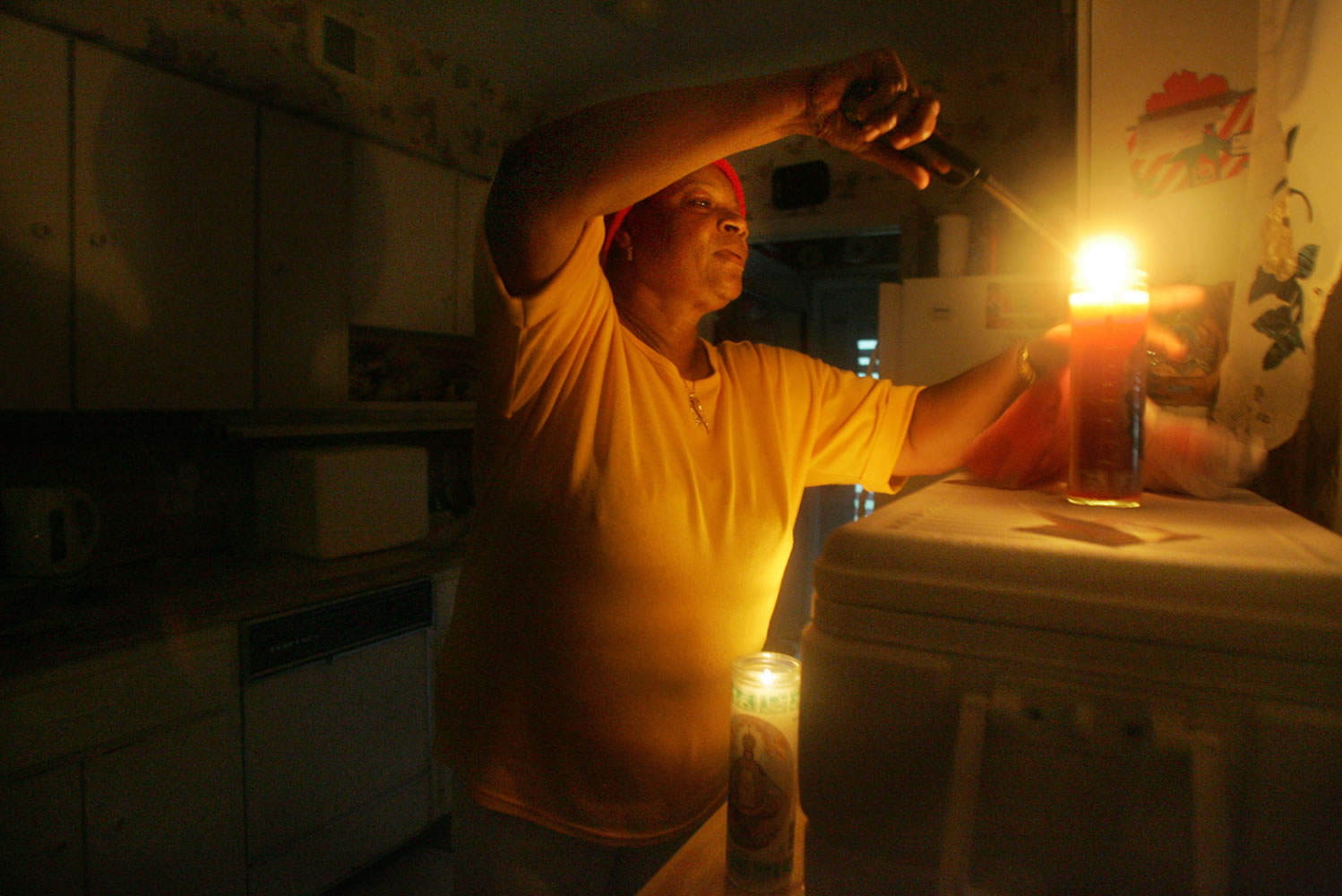NEW YORK — As the number of nights without power stretched on for thousands left in the dark after Superstorm Sandy, patience understandably turned to anger and outrage.
But an Associated Press analysis of outage times from other big hurricanes and tropical storms suggests that, on the whole, the response to Sandy by utility companies, especially in hardest-hit New York and New Jersey, was typical — or even a little faster than elsewhere after other huge storms.
The AP, with the assistance of Ventyx, a software company that helps utilities manage their grids, used U.S. Energy Department data to determine how many days it took to restore 95 percent of the peak number of customers left without power after major hurricanes since 2004, including Ivan, Katrina, Rita, Wilma, Ike and Irene.
After Sandy, New York utilities restored power to at least 95 percent of customers 13 days after the peak number of outages was reported. New Jersey reached that same level in 11 days and West Virginia in 10 days.
Hurricanes Katrina, Rita and Wilma in 2005 and Ike in 2008 all resulted in longer outages for customers in Louisiana, Texas, Mississippi and Florida.
The longest stretch to 95 percent restoration since 2004 was Louisiana after Hurricane Katrina, where local utilities had power restored to only three-quarters of their customers after 23 days before Hurricane Rita hit and caused additional outages.
Rita left Texas customers in the dark for 16 days; Katrina knocked out power to Mississippi customers for 15 days; Wilma and Ike knocked Florida and Texas out for 14 days each before power was restored to 95 percent of those who lost it, according to the federal data.
New York and New Jersey recovered far faster after last year’s Hurricane Irene. It took seven days for New York to restore 95 percent of customers and six days for New Jersey. But the number of outages in each state was less than half than from Sandy.
The restoration target of 95 percent allowed the AP to compare responses to the largest number of recent storms using Energy Department data, and is considered by industry experts to provide a meaningful picture of the speed with which utilities restored service to the vast majority of customers.
A week or two without power is, without question, a difficult and frustrating hardship. There’s the spoiled food in the fridge and the dark nights. There’s the fire danger from relying on candles. No electricity also can mean no heat. In tall apartment buildings, it means no elevator service, a serious problem for the infirm or elderly who can’t navigate stairs. For those who rely on mobile phones for communication, it means no way to charge phones — and therefore no way to communicate with loved ones or emergency services.
Michael Redpath of Toms River, N.J. was without power for 15 days before getting it back this week. He and his wife stayed in their home for the first week after Sandy because their friends also had lost power. As some power in the region was restored, and Redpath’s wife got sick from too many nights in the cold, they started staying over with friends.
“It’s just so disorienting to be without power, to be out of your house and to not know what’s going on,” he says.
Determining the quality of a utility’s restoration efforts after an outage is difficult to do, experts say. That’s because every storm generates a unique cocktail of mayhem that differs from location to location.
Just because New York and New Jersey utilities restored power in a range that is normal by historical standards does not prove that all of the utilities in the region performed equally well, or that they performed better or worse than their peers responding to outages in other states, or that there isn’t plenty of room for improvement.
Frustrated residents, business owners and state and local officials lashed out at their electric utilities. Gov. Andrew Cuomo of New York formed a commission to investigate the responses of utilities in his state, and the operations chief of one utility, the Long Island Power Authority, resigned.
Cuomo called LIPA “beyond repair” and also expressed frustration with the performance of Consolidated Edison, the electric utility for New York City and Westchester County to the north.
Also, a positive general performance doesn’t create any good will for those still suffering.
Sam Kusack, who owns an architectural metal fabrication shop in Red Hook, Brooklyn, was still without power Thursday, 17 days after going dark. Red Hook is in an isolated section of Brooklyn, and Con Edison only began laying new underground wires near his shop this week.
Workers told him power would be back by Friday, but, Kusack said, the utility had called him several times in the early days of the crisis to say his power would soon be restored. Those calls stopped long ago, and Kusack has continued to rely on a generator that gobbles expensive diesel fuel.
“It was a big storm, but it’s been awhile,” he said. “It’s tough to run a company on a generator, with no power. I have 25 employees, and a payroll to meet.”
The fact that it has taken utilities roughly the same amount of time to restore the vast majority of customers as after similar-sized storms suggests that restoring power after an enormous weather event is simply a long, difficult process.



